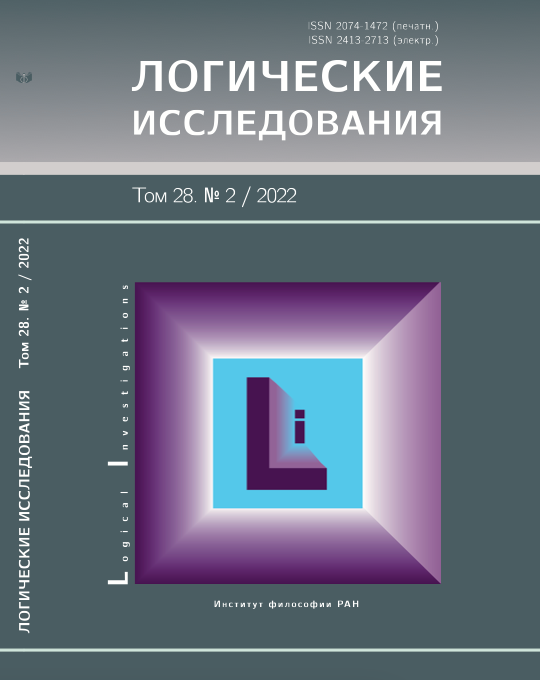Teleology and Goal-directed Behavior: A Logical Analysis
##plugins.themes.bootstrap3.article.main##
Abstract
Goal-directed behavior is a teleological notion that characterizes many changes in wildlife. This kind of behavior has unique characteristics. It is law-like, as it is characterized by stability and repeatability under similar initial conditions. It is anti-entropy, since its results often have less entropy than the initial conditions. It also has the properties of a kind of reverse causality, when the future goal state through the agent of goal-directed behavior leads to changes in the present.
The elementary blocks of goal-directed behavior can be represented by two types of rules – constructive “If C occurs, do d to achieve G” and procedural “If C occurs, do d to start process P, which will lead to the desired goal G”. Complex goal-directed behavior can be defined as the execution of a set of rules that determine what actions should be performed and in what order to achieve the desired end goal. Successful schemes of goal-directed behavior have served as the basis for the emergence of various technologies.
An analysis of the goal-directed activity of people during the calculation of functions led A. Turing to the construction of a mathematical model, called the Turing machine. For a number of reasons, it is impossible to create a theory of goal-directed behavior comparable to the theory of effective computability, but it is quite possible to construct a logical theory of this kind of behavior, which is the goal of this work. For this, we took a language containing that contains dynamic operators <d> and temporary operators U (Until) and S (Since). The paper presents the semantics of this language and its axiomatization. The constructed minimal logic allows further extensions. It is shown how in this logic it is possible to determine the elementary rules of purposeful behavior and their varieties.
##plugins.generic.usageStats.downloads##
##plugins.themes.bootstrap3.article.details##
Copyright (c) 2022 Владимир Иванович Шалак

This work is licensed under a Creative Commons Attribution-NonCommercial 4.0 International License.
References
Евлампиев и др. 2019 – Евлампиев И.И., Куприянов В.А. Телеология в классической и неклассической философии. СПб.: РХГА, 2019. – 308 с.
Украинцев 1972 – Украинцев Б.С. Самоуправляемые системы и причинность. М.: “Мысль”, 1972. – 256 с.
Фролов 2019 – Фролов И.Т. Детерминизм и телеология. М.: “Либроком”, 2019. – 272 с.
Faye 2021 – Faye J. Backward Causation, The Stanford Encyclopedia of Philosophy (Spring 2021 Edition), Edward N. Zalta (ed.), URL = https://plato.stanford.edu/archives/spr2021/entries/causation-backwards/.
Kamp 1968 – Kamp J. A. W. Tense Logic and the Theory of Linear Order, doctoral dissertation, University of California at Los Angelis, 1968.
Ming 1988 – Ming Xu On some U,S-tense Logics// Journal of Philosophical Logic 17 (2), 1988. pp. 181–202.
Ruse 2003 – Ruse M. Darwin and design: does evolution have a purpose? Cambridge, Massachusetts and London, England, 2003.
Turing 1936 – Turing A.M. On Computable Numbers, with an Application to the Entscheidungsproblem // Proceedings of the London Mathematical Society. 1936–1937. Vol. 42. P. 230–265.
